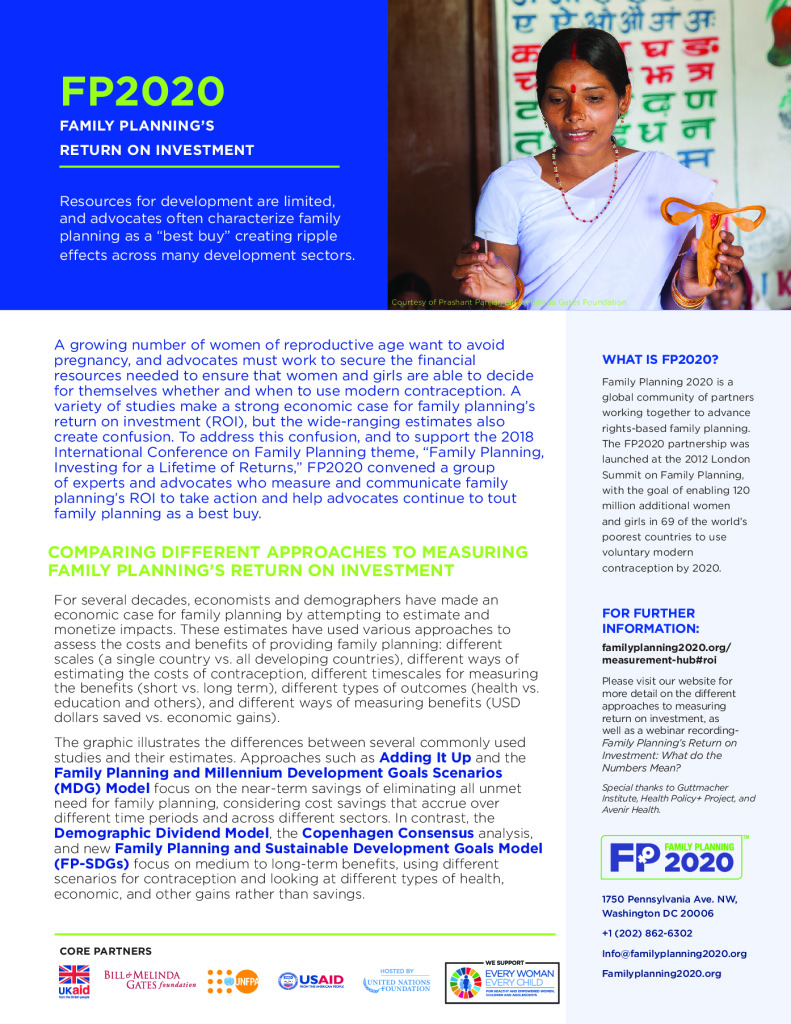
Resources
FP2020: Family Planning's Return on Investment
Factsheets
FP2030 Resources
Infographics
Previous

CIP Execution Country Assessment Checklist
Next

Adding It Up: Investing in Contraception and Mater...
Topics:
Financing
A growing number of women of reproductive age want to avoid pregnancy, and advocates must work to secure the financial resources needed to ensure that women and girls are able to decide for themselves whether and when to use modern contraception. A variety of studies make a strong economic case for family planning’s return on investment (ROI), but the wide-ranging estimates also create confusion. To address this confusion, and to support the 2018 International Conference on Family Planning theme, “Family Planning, Investing for a Lifetime of Returns,” FP2020 convened a group of experts and advocates who measure and communicate family planning’s ROI to take action and help advocates continue to tout family planning as a best buy.
Comparing Different Approaches to Measuring Family Plannings Return on Investment
For several decades, economists and demographers have made an economic case for family planning by attempting to estimate and monetize impacts. These estimates have used various approaches to assess the costs and benefits of providing family planning: different scales (a single country vs. all developing countries), different ways of estimating the costs of contraception, different timescales for measuring the benefits (short vs. long term), different types of outcomes (health vs. education and others), and different ways of measuring benefits (USD dollars saved vs. economic gains).
The graphic illustrates the differences between several commonly used studies and their estimates. Approaches such as Adding It Up and the Family Planning and Millennium Development Goals Scenarios (MDG) Model focus on the near-term savings of eliminating all unmet need for family planning, considering cost savings that accrue over different time periods and across different sectors. In contrast, the Demographic Dividend Model, the Copenhagen Consensus analysis, and new Family Planning and Sustainable Development Goals Model (FP-SDGs) focus on medium to long-term benefits, using different scenarios for contraception and looking at different types of health, economic, and other gains rather than savings.









